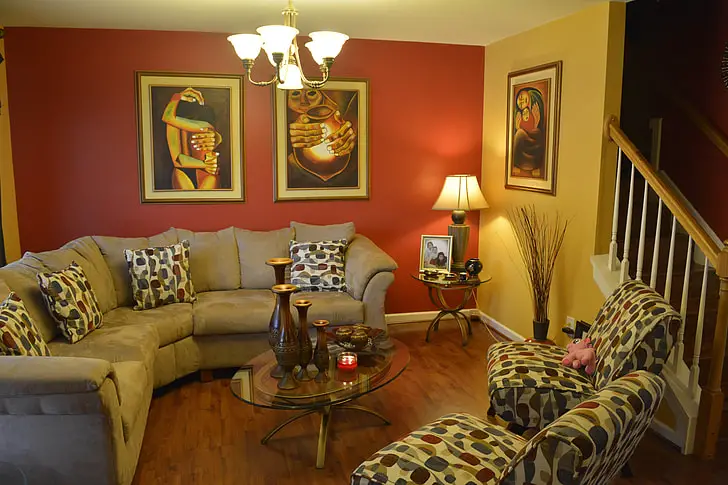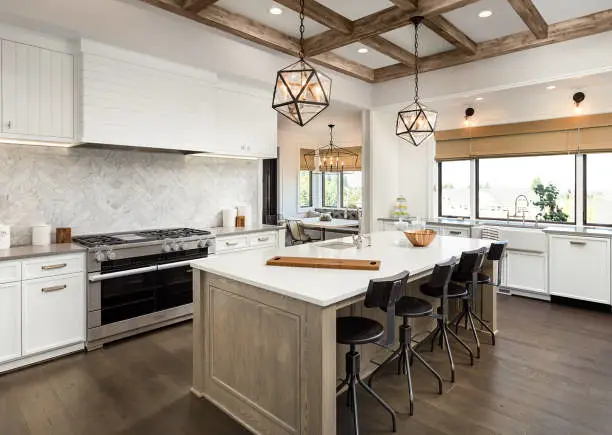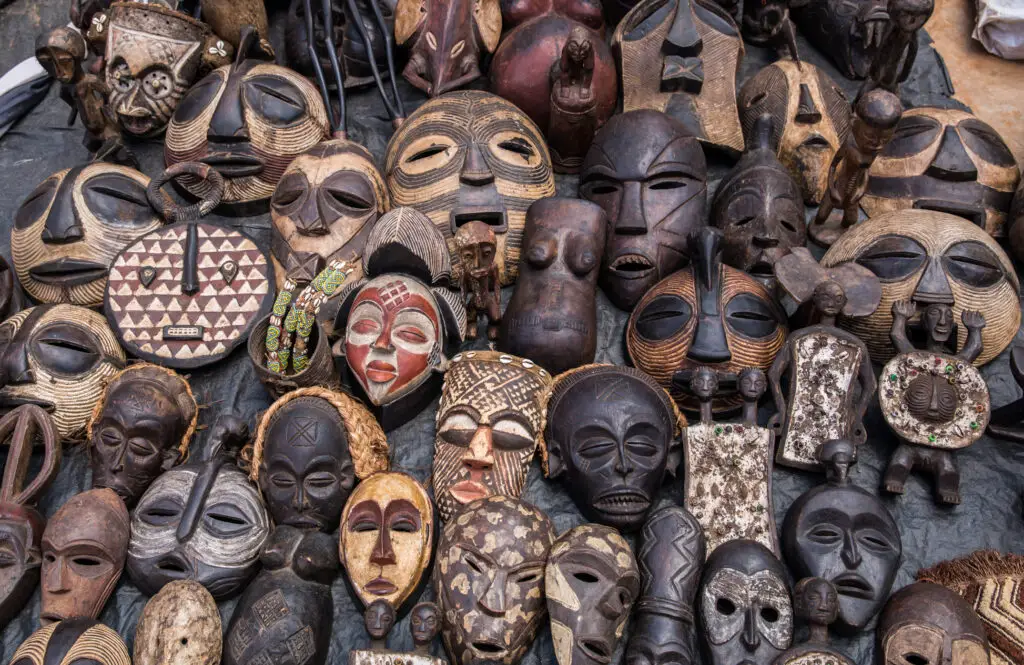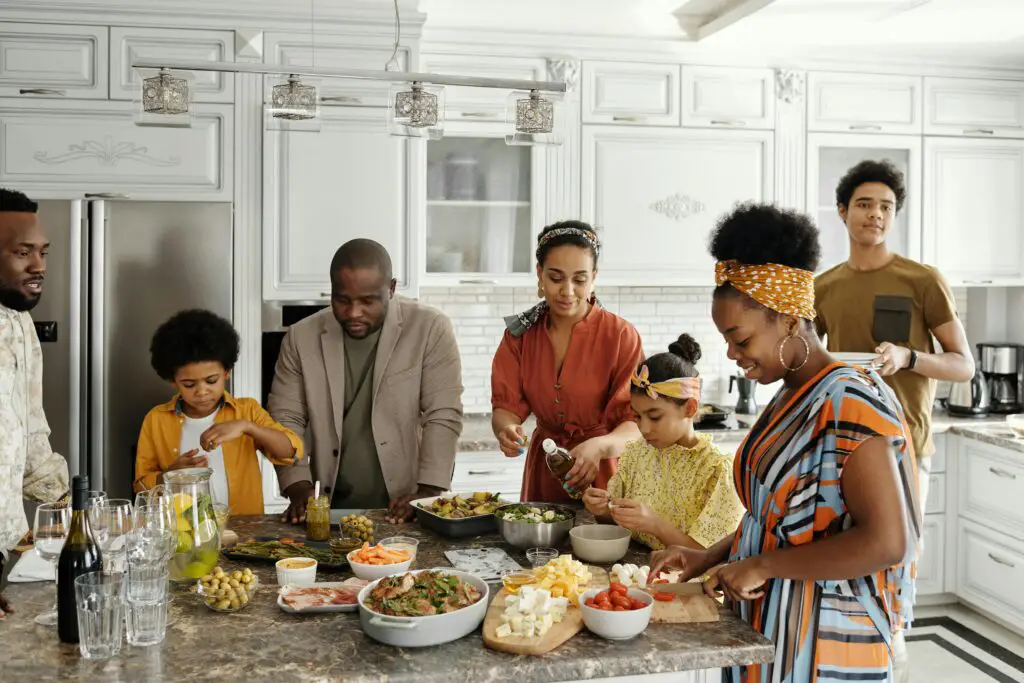Black homes have long been subject to stereotypes and misconceptions in the world of interior design. These myths often stem from outdated ideas, media misrepresentation, and a lack of understanding of the diverse styles and tastes within Black communities. The truth is that Black homeowners and designers have always played a significant role in shaping global design trends, incorporating both heritage and innovation into their spaces. It’s time to debunk these harmful myths and celebrate the reality of Black home design. Here are six interior design myths about Black homes that need to die.
1. Black Homes Are Always Loud and Over-the-Top

One of the most persistent myths is that Black homes are filled with excessively bold colors, extravagant furniture, and flashy décor. While some homeowners enjoy vibrant aesthetics, just like in any other community, Black homes embrace a wide range of styles. Minimalist, bohemian, Scandinavian, and modern industrial designs are just as common in Black households as maximalist and Afrocentric styles. Many Black designers and homeowners prioritize clean lines, neutral palettes, and subtle textures that create a calm, sophisticated atmosphere.
The assumption that every Black home is overly flamboyant disregards the diversity of personal taste and lifestyle. This myth also ignores the influence of Black interior designers who have mastered understated luxury and timeless elegance. The truth is, Black homes are as varied and nuanced as the people who live in them. Whether it’s soft earth tones, sleek monochromes, or bold prints, the choice is always intentional and personal.
2. Black Homes Lack High-End and Luxury Design

There is a misconception that Black homeowners do not invest in luxury interior design or high-end décor. This stereotype ignores the fact that Black homeowners have long supported and contributed to luxury design markets. From custom furniture to designer textiles, Black homes often reflect a refined sense of taste and attention to detail. Many Black designers, such as Justina Blakeney and Brigette Romanek, are leading voices in luxury interior design, shaping trends that are widely admired.
Black wealth and affluence exist, and so do homes that showcase high-end materials like marble, brass, velvet, and handcrafted woodwork. The idea that Black homes must adhere to a “budget look” is both outdated and incorrect. Many Black families invest in generational homes with custom-built features that highlight craftsmanship and sophistication. From high-tech smart homes to historic mansions with restored details, Black luxury design is alive and thriving. This myth fails to recognize the breadth of style and investment in beautifully curated Black spaces.
3. African-Inspired Decor Is the Only Acceptable Aesthetic

While Afrocentric design is a stunning and meaningful choice, it is not the only aesthetic found in Black homes. The assumption that every Black household should be decorated with tribal prints, kente cloth, and wooden masks limits the expression of personal style. Many Black homeowners prefer mid-century modern, farmhouse, contemporary, or even industrial aesthetics. Black people have influenced design trends across multiple styles, and their homes reflect a broad spectrum of inspirations.
Some choose to incorporate African influences in subtle, modern ways, while others may not include them at all. Forcing a singular aesthetic onto Black homes ignores the individuality of Black designers, creatives, and homeowners. Interior design should be about self-expression, not cultural expectations imposed by outsiders. The beauty of Black home design lies in its diversity, blending heritage with personal taste in ways that feel authentic.
4. Black Homes Are Always Filled With Family Heirlooms and Religious Symbols

Many assume that every Black home must have an oversized Bible on the coffee table, portraits of ancestors on the walls, or heirlooms passed down for generations. While some families take pride in preserving these traditions, not every Black household follows this template. Some Black homeowners prefer ultra-modern, minimalist spaces with sleek, futuristic aesthetics. Others may opt for trendy, eclectic styles that reflect their travels, interests, and artistic tastes rather than family traditions.
While faith and family history are significant aspects of Black culture, they do not dictate how every home is designed. Some homes prioritize contemporary art, cutting-edge technology, or vintage-inspired décor rather than traditional religious or historical elements. Black homes are as dynamic and evolving as any other, influenced by pop culture, design trends, and individual personalities. The idea that Black homes must always be sentimental or rooted in the past ignores the creativity and innovation within Black interior design.
5. Black Homeowners Don’t Hire Professional Interior Designers

The belief that Black homeowners don’t invest in professional interior design is not only false but also dismisses the growing influence of Black designers in the industry. Black interior designers like Sheila Bridges, Mikel Welch, and Tiffany Brooks are reshaping the design landscape with their expertise and creativity. Many Black homeowners seek out professionals to create curated, magazine-worthy spaces that reflect their style and needs.
The rise of Black-led design firms and home renovation businesses has also led to more representation in the luxury design space. Social media and design blogs showcase countless examples of professionally styled Black homes that defy outdated assumptions. Black homeowners are just as likely to appreciate and invest in expert design guidance as anyone else. The myth that they only rely on DIY solutions or “make do” with existing furniture is simply untrue. More Black families are taking ownership of their home aesthetics and collaborating with top designers to create stunning interiors.
